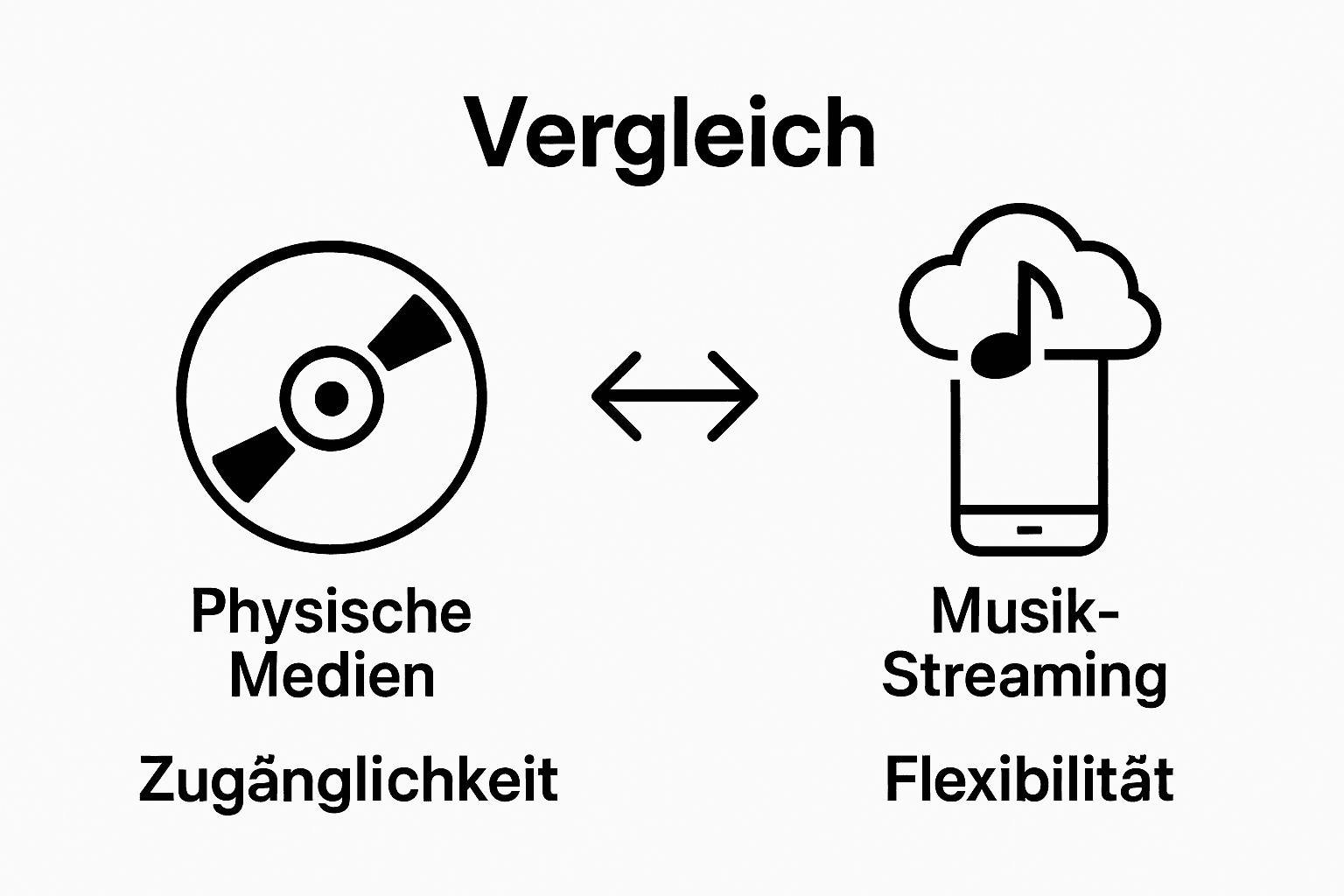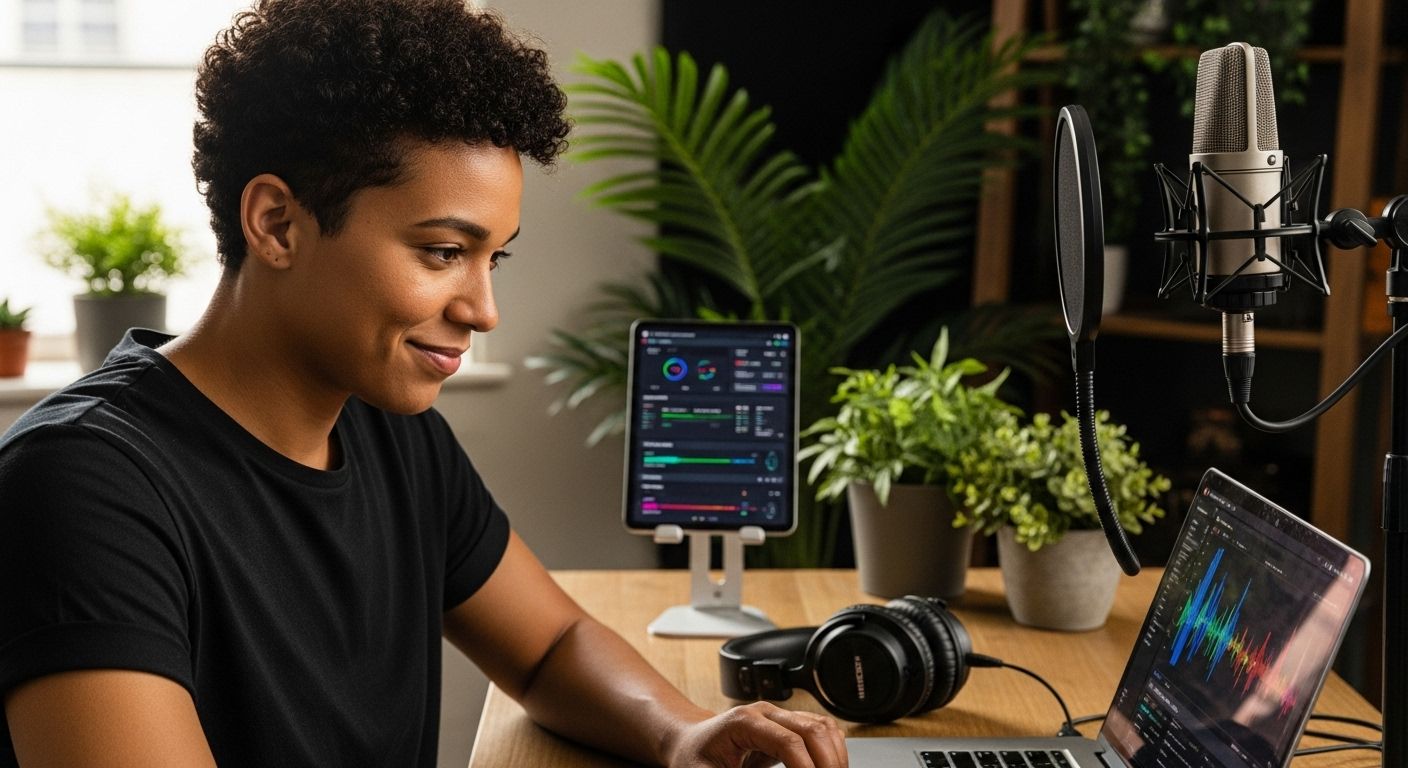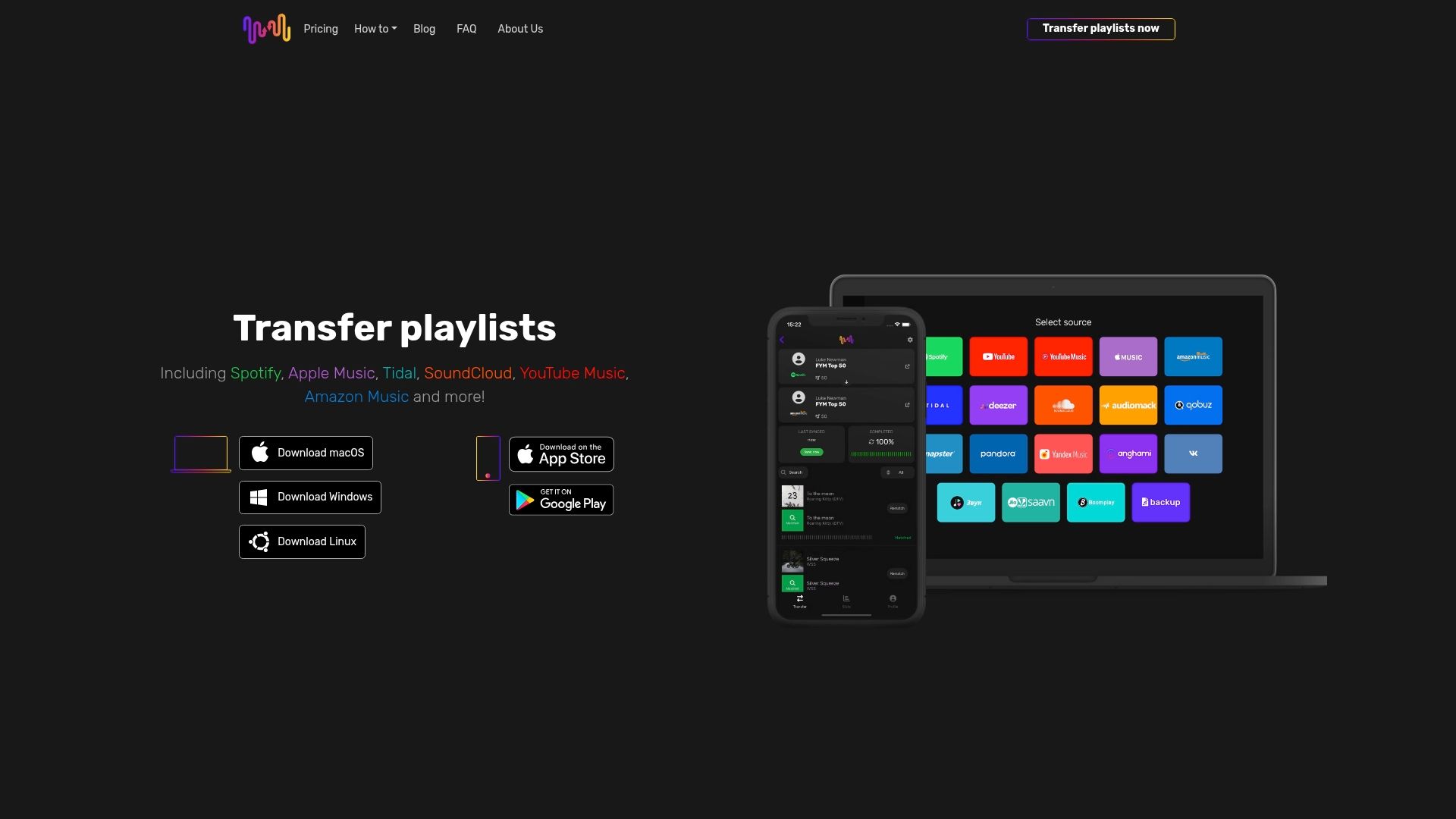Music streaming has long been part of many people's everyday lives and provides access to millions of songs anywhere and at any time. Surprisingly, 83.3% of students use YouTube as their main platform for music, ahead of popular providers such as Spotify. However, the real revolution is not just in the limitless supply of music, but in how streaming services are turning our personal relationship with music on its head.
Quick overview
| Takeaway | Explanation |
|---|---|
| Music streaming revolutionizes music consumption | Streaming allows users to enjoy millions of songs anytime, anywhere without the need for physical media. |
| Personalized recommendations enhance user experience | Streaming services use algorithms to create playlists based on individual music preferences. |
| Artists benefit from direct access | Independent musicians reach global audiences without the hurdles of the traditional music industry. |
| Selection of streaming service is crucial | Comparison of offers in terms of sound quality, price and features helps to make the right choice. |
| Future technologies will adapt music streaming | Artificial intelligence and immersive experiences will further personalize and enhance listening. |
What is music streaming and how does it work?
Music streaming is a modern technology that allows users to listen to music directly over the internet without having to download physical media or files. Unlike traditional music consumption, streaming means that audio data is transferred from a server to your device in real time.
How it works technically
The process of streaming music is based on a complex digital infrastructure. When you play a song on a streaming platform, small data packets are continuously transmitted from servers. According to Bitkom e.V., music streaming services have fundamentally changed the way people consume music.
The technical steps include:
- Compression of audio data for fast transmission
- Buffering the data on your device
- Continuous playback during data transfer
Advantages of music streaming
Music streaming offers users unprecedented flexibility. With access to millions of tracks, you can expand your music collection virtually limitlessly. Explore how you can manage your music library across different platforms to optimize your music experience.
The technology not only allows you to listen to music, but also offers smart features such as personalized playlists, recommendation algorithms and seamless synchronization across different devices.
The advantages of music streaming compared to physical media
Music streaming has completely transformed traditional music formats and offers users a whole new listening experience.
 Unlike physical media such as CDs or records, streaming allows for a flexible, limitless world of music.
Unlike physical media such as CDs or records, streaming allows for a flexible, limitless world of music.
Unparalleled variety and accessibility
The biggest advantage of music streaming is the sheer endless choice of music. With just one click, you have access to millions of songs from a wide range of genres and eras. According to the University of Hamburg, this accessibility even influences the concert-going behavior of music fans.
Key benefits include:
- Instant access to global music libraries
- No costs for physical storage media
- Easy creation and management of playlists
Personalization and convenience
Modern streaming services offer more than just music playback. They learn your music preferences through algorithms and create customized recommendations. Discover your personal music statistics to better understand your listening habits.
The technological convenience means that you no longer physically own music, but can enjoy it flexibly and wherever you are.
To give you a quick overview of the key differences between music streaming services and physical music media, this table summarizes their key features.
| Aspect | Music streaming services | Physical media (CDs, records) |
|---|---|---|
| Accessibility | Access to millions of songs anytime and anywhere | Tied to playback location and number of purchased media |
| Music selection | Virtually unlimited, all genres and eras available | Limited to physically purchased albums |
| Personalization | Intelligent recommendations and playlists through algorithms | No algorithmic personalization possible |
| Storage requirements | No storage requirements for songs on device | Physical storage of media required |
| Flexibility | Seamless synchronization across different devices | Each sound carrier can only be played on compatible devices |
| Cost structure | Monthly subscription fee, mostly flat rate | One-time purchase price per album or single |
| Sustainability | No material costs, purely digital | Resource-intensive production and transportation |
| Everyday usability | From the living room couch to the smartphone during the commute – music is available everywhere | Limited to physical location and device availability |
Why music streaming is important for artists and listeners
Music streaming has fundamentally changed the music industry, creating a connection between artists and their audience like never before. It's more than just a technology - it's an ecosystem that fosters creativity, accessibility and innovation.
Opportunities for artists
According to Pew Research Center, 66% of musicians use the internet to collaborate with others and distribute their music. Streaming platforms give independent artists direct access to a global audience without the traditional barriers of the music industry.
Key benefits for artists include

- Direct access to a global audience
- Ability to release music independently
- Transparent revenue mechanisms through streaming statistics
Benefits for music listeners
For listeners, music streaming is more than just music consumption. It's a personalized journey through sounds and emotions. Discover how you can seamlessly transfer your music library between different platforms to optimize your music experience.
Through intelligent algorithms, streaming services learn individual music preferences and offer customized recommendations. This not only allows listeners to discover new artists, but also supports aspiring musicians in their career development.
Music streaming services: a look at popular platforms
The world of music streaming services is diverse and offers the right platform for every musical taste and budget. From global market leaders to niche providers, there is a wide range of streaming options.
The leading music streaming platforms
According to a study by Rajshahi University, 83.3% of students surveyed use YouTube as their primary music platform, followed by Spotify. These figures highlight the dominance of certain providers in the streaming market.
The main platforms include:
- Spotify: Known for personalized playlists
- Apple Music: Seamless integration with Apple ecosystems
- YouTube Music: Large selection of videos
- Amazon Music: Ideal for Prime members
- Tidal: High-fidelity audio for audiophiles
Selection criteria for the right service
Choosing the right music streaming service depends on individual preferences. Discover how you can transfer your music library between different platforms for maximum flexibility.
Important selection criteria are music selection, sound quality, price, ease of use and additional features such as offline mode or family subscriptions. Each platform offers unique features that appeal to different user groups.
This table shows the most important features of the leading music streaming platforms at a glance and helps to better recognize differences in offerings and functions.
| Platform | Known for | Special features | Target group |
|---|---|---|---|
| Spotify | Personalized playlists | Extensive algorithms | Broad user base |
| Apple Music | Integration into Apple ecosystem | Smooth device pairing | Apple users |
| YouTube Music | Large video selection | Music and video content | Younger target groups |
| Amazon Music | Benefits for Prime members | Often part of Prime | Prime customers, price-conscious |
| Tidal | High-fidelity audio | High-quality sound | Audiophile listeners |
Future developments in music streaming
Music streaming is on the cusp of a technological revolution that will fundamentally change the way we consume music. New technologies and changing user needs are driving this development.
Technological innovations
According to Goldman Sachs, global music revenues will rise to 200 billion US dollars in the next ten years, which means huge investments in new technologies.
Key future developments include:
- Artificial intelligence for personalized music recommendations
- Improved sound quality through high-resolution audio formats
- Immersive listening experiences through virtual and augmented reality
Changing user experience
Stay informed about the latest developments to understand the future of music streaming. The industry is evolving rapidly, offering users ever more personalized and interactive music experiences.
Future streaming services are likely to focus more on personalization, social interaction and seamless device integration. Musicians will be able to communicate more directly with their fans and listeners will receive even more precise music recommendations.
Discover the full freedom of music streaming - without losing your playlists
You enjoy the limitless music selection, personalized recommendations and flexibility of music streaming. But one critical problem remains: Switching between different streaming providers is complicated and involves a lot of effort. All those lovingly compiled playlists, personal song sequences and your music collection are in danger of being lost. This is exactly where our solution comes in.

With Free Your Music, you can transfer your entire playlists quickly and securely from Spotify, Apple Music, Tidal, YouTube Music or Amazon Music to your new music service. Your music library remains intact and you no longer have to laboriously recreate a single list. Find out more about how easy it is to transfer playlists without losing data. Say goodbye to starting over - transfer your music collection now and get the best possible start on your new streaming platform today.
Frequently asked questions
What is music streaming?
Music streaming is a technology that allows users to listen to music over the internet without having to download files. The audio data is transferred from servers to your device in real time.
What are the advantages of music streaming compared to physical media?
Music streaming offers an almost unlimited choice of music, instant access to global music libraries and the ability to easily create and manage playlists.
How does music streaming support artists?
Streaming platforms offer artists direct access to a global audience, allowing them to release their music independently and generate transparent revenue through streaming statistics.
What are the most important factors when choosing a music streaming service?
Important selection criteria are the music selection, sound quality, price, user-friendliness and additional functions such as offline mode or family subscriptions.
Recommendation
- Free Your Music - your music statistics
- Transferring playlists from YouTube to YouTube Music
- Transfer playlists from Apple Music to YouTube
- Transferring playlists from Amazon Music to YouTube






